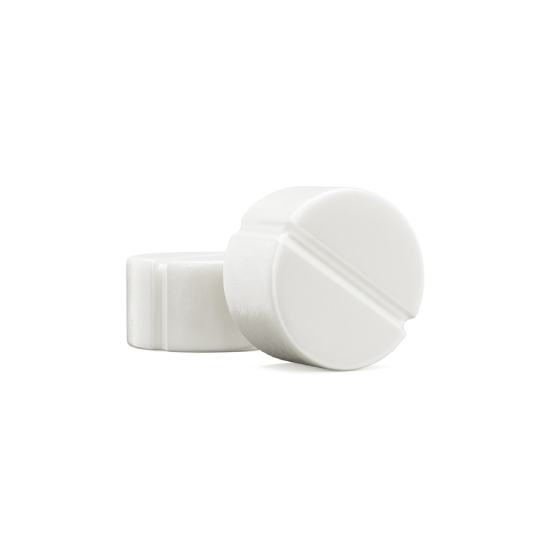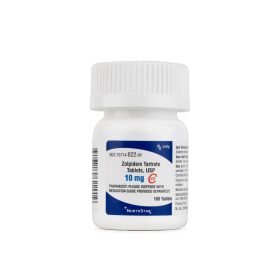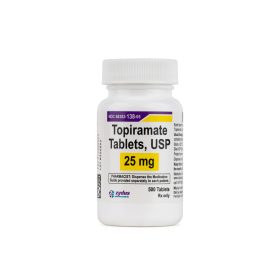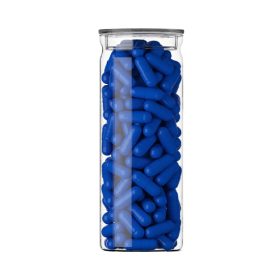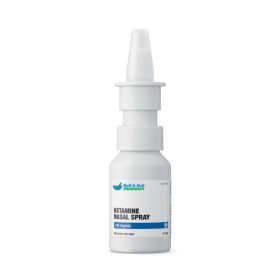This product is available solely through our 503A Compounding Pharmacy, ensuring personalized care and precision in every order. Please note that a valid prescription is required for purchase. If you do not have an account, please contact us.
Ketamine ODT (Each)
Ketamine ODT (oral dissolving tablet) is an off-label formulation used primarily for treatment-resistant depression, anxiety, PTSD, and chronic pain. It offers a convenient, sublingual alternative to IV or nasal forms, typically administered under medical supervision.
Mechanism of Action:
Ketamine works by blocking NMDA receptors, which increases glutamate release and enhances synaptic plasticity. This leads to rapid antidepressant effects, often within hours to days.
Contraindications & Precautions:
It should be avoided in individuals with uncontrolled high blood pressure, aneurysms, psychosis, or known allergies to ketamine. Use with caution in patients with cardiovascular disease, liver impairment, or a history of substance abuse.
Interactions:
There is increased sedation risk when combined with central nervous system (CNS) depressants like alcohol, benzodiazepines, or opioids. Caution is also advised with MAO inhibitors or stimulants due to potential cardiovascular effects.
Adverse Reactions / Side Effects:
Include dizziness, nausea, dissociation, and drowsiness. More serious risks include elevated blood pressure, hallucinations, and potential for misuse or dependence with prolonged use.
Pregnancy & Breastfeeding:
It should also be avoided during breastfeeding, as safety for infants has not been established.
Store this medication at 68°F to 77°F (20°C to 25°C) and away from heat, moisture and light. Keep all medicine out of the reach of children. Throw away any unused medicine after the beyond use date. Do not flush unused medications or pour down a sink or drain.
- Persson J. Wherefore ketamine? Curr Opin Anaesthesiol. 2010;23:455–60.
- Stoelting RK, Hillier SC. Nonbarbiturate intravenous anaesthetic drugs. In: Stoelting RK, Hillier SC, editors. Pharmacology and Physiology in Anaesthetic Practice. 4th ed. Philadelphia: Lippincott Williams and Wilkin; 2006. pp. 155–78
- Reynolds JEF, Parfitt K, Parsons AV, Sweetman SC (eds.). Martindale, the extra pharmacopoeia. 29th Edition.The Pharmaceutical Press: London, 1989.
- Reich DL, Silvay G. Ketamine: an update on the first twenty-five years of clinical experience. Can J Anaesth 1989;36:186-97.
- Hansen G, Jensen SB, Chandresh L, Hilden T. The psychotropic effect of ketamine. J Psychoactive Drugs 1988;20:419-425.
- Malinovsky JM, Servin F, Cozia A, Lepage JY, Pinaud M. Ketamine and norketamine plasma concentrations after i.v., nasal and rectal administration in children. Br J Anaesth 1996;77:203-207.
- Grant IS, Nimmo WS, Clements JA. Pharmacokinetics and analgesic effects of i.m. and oral ketamine. Br J Anaesth 1981;53:805-10.
- Errando CL, Sifre C, Moliner S, Valia JC, Gimeno O, Minguez A, Boils P. Subarachnoid ketamine in swine-pathological findings after repeated doses: acute toxicity study. Reg Anesth Pain Med 1999;24:146-52.
- Malinovsky JM, Lepage JY, Cozian A, Mussini JM, M Pinaudt M, Souron R. Is ketamine or its preservative responsible for neurotoxicity in the rabbit? Anesthesiology 1993;78:109-15.
- Hirota K, Lambert DG. Ketamine: New uses for an old drug? Br J Anaesth. 2011;107:123–6
- Yoon SH. Concerns of the anesthesiologist: Anesthetic induction in severe sepsis or septic shock patients. Korean J Anesthesiol. 2012;63:3–10.
- Sleigh J, Harvey M, Voss L, Denny B. Ketamine-more mechanisms of action than just NMDA blockade. Trends Anaesth Crit Care. 2014;4:76-81
- White JM, Ryan CF. Pharmacological properties of ketamine. Drug Alc Review 1996;15:145-155.
- Bergman SA. Ketamine: review of its pharmacology and its use in pediatric anesthesia. Anesth Prog 1999;46:10-20.
- Green SM, Clark R, Hostetler MA, Cohen M, Carlson D, Rothrock SG. Inadvertent ketamine overdose in children: clinical manifestations and outcome. Annals of emergency medicine. 1999; 34(4): 492-497.
- Kopman AF. To the editor: ketamine may interact with barbiturate premedication in producing delayed awakening from anesthesia and significant respiratory depression. Anesth. Analg. 1972;51:793-4.
- Moore KA, Kilbane EM, Jones R, Kunsman GW, Levine B, Smith M. Tissue distribution of ketamine in a mixed drug fatality. J Forensic Sci 1997;42:1183-5.
- Murphy JL Jr. Hypertension and pulmonary oedema associated with ketamine administration in a patient with a history of substance abuse. Can J Anaesth 1993;40:160-4.
- Noppers IM, Niesters M, Aarts LP, Bauer MC, Drewes AM, Dahan A, Sarton EY. Drug-induced liver injury following a repeated course of ketamine treatment for chronic pain in CRPS type 1 patients: a report of 3 cases. Pain. 2011 Sep;152(9):2173-8.

